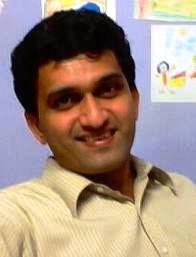Seventh Alexander Graham Bell Lecture
Reliable Wireless Access in the UHF Band by Enabling Multi-Operator Spectrum Sharing
Wireless access technology has evolved from voice-only services in the early days of 2G cellular, to data plus voice services in 2.5G and 3G, and to purely data services in 4G standards. The IMT-2020 or 5G wireless access is supposed to provide 1Gbps rates to mobile users by using a mix of more antennas, more bandwidth (at 27GHz and/or 60GHz), and more small cells.
Yet, it is well known that the sub-1GHz bands are the “premium” bands when it comes to providing reliable data links in a cost-effective manner. However, sufficient bandwidth slices are not available, especially in the UHF band (450MHz-700MHz), for exclusive licensing to individual broadband operators.
While various orthogonal spectrum sharing schemes have been considered by various research groups worldwide, we propose a non-orthogonal spectrum sharing scheme which we believe can be very effective for cost-sensitive markets like India. Here, 4 (or even 6) broadband operators can simultaneously radiate and receive on the same spectrum slice, and the interference they cause on each other is “carefully managed” by using a mix of techniques at different levels of the communication link.
Early system simulation results on this Multi-Operator Simultaneous Synchronized Sharing based Air Interface for Communications (MOSSSAIC) indicate the tremendous advantage in terms of spectral utilization (sum rate per Hz), even without nearly any compromise on the rates seen by each operator. This scheme can also be used to provide ultra-reliable communications, especially during emergency scenarios.
Date and Time
Location
Hosts
Registration
-
 Add Event to Calendar
Add Event to Calendar
- Contact Event Host
-
Venu (IEEE) at 9246176967, venu_ieee2001@yahoo.com
- Co-sponsored by International Institute of Information Technology
- Survey: Fill out the survey
Speakers
 Prof K Giridhar of Indian Institute of Technology Madras
Prof K Giridhar of Indian Institute of Technology Madras
Biography:
K. Giridhar is a Professor at the Indian Institute of Technology Madras, Chennai. He studied BSc (Applied Sciences) at PSG College of Technology,
Coimbatore, ME (Electrical Communications) at Indian Institute of Science, Bangalore, and received a PhD (Electrical Engineering) from University of California, Santa Barbara. Between 1989-90, he was a member of research staff at CRL, Bharat Electronics, Bangalore, and between 1993-94, was a research affiliate in Electrical Engineering at Stanford University, California. Since 1994, he has been with the Department of Electrical Engineering at IIT Madras.
His research interests are broadly in the areas of adaptive signal processing and wireless communications systems, with an emphasis on various transceiver algorithms, custom air-interface design for strategic communications, and more recently, on non-orthognal spectrum sharing for broadband wireless access.
Giridhar is a member of the Telecommunications and Computer Networks (TeNeT) Group (www.tenet.res.in) at IITM, and actively collaborates with the Center of Excellence in Wireless Technology (www.cewit.org.in) on cellular broadband access research.
He serves as a consultant to many telecom companies in India, and was on a sabbatical in 2004-05 with Beceem Communications. Giridhar has been a visiting faculty at Sri Sathya Sai Institute of Higher Learning, Prasanthi Nilayam, and at Stanford University.
Email:
Address:Dept of EE, IIT Madras, Chennai, India, 600036
Agenda
Snacks and tea will be served from 3:30PM onwards.
Lecture starts at 4:30PM
Register online

